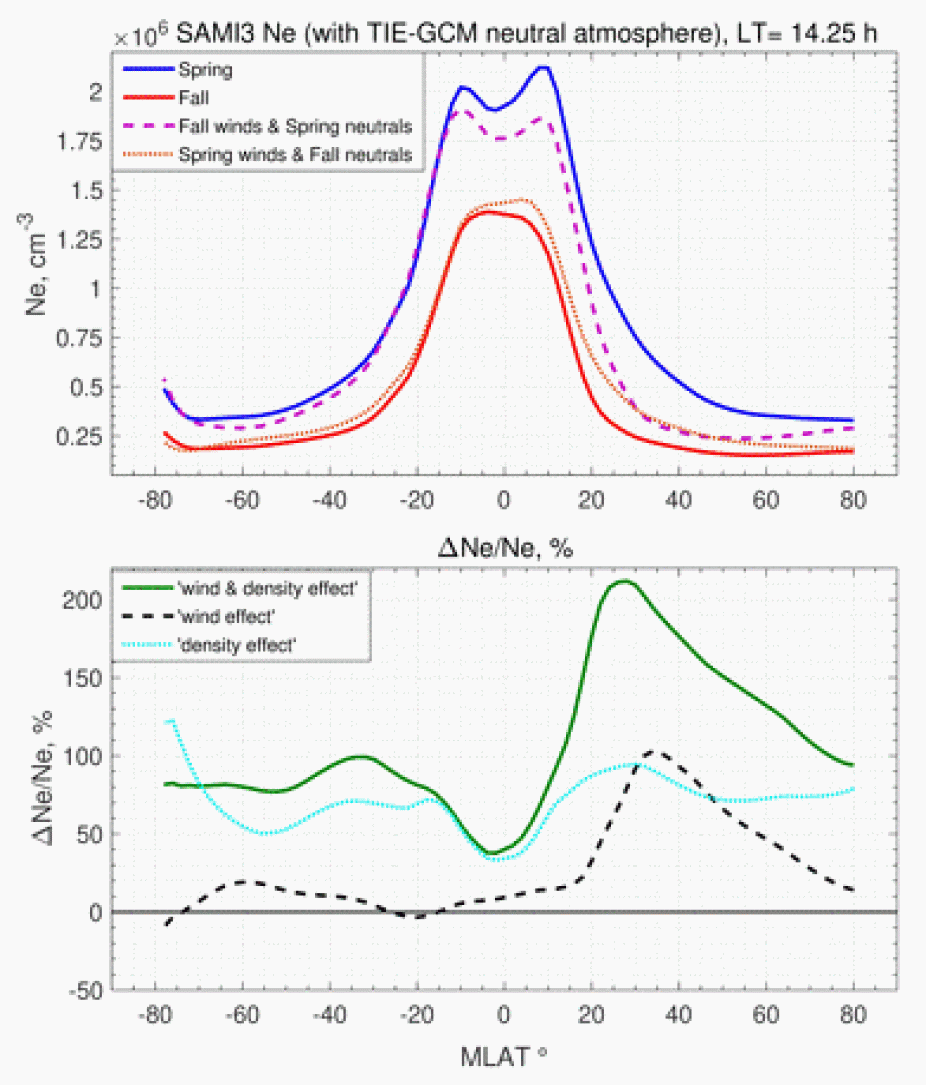JGR Space Phyics—L. Lomidze, D. J. Knudsen, M. Shepherd, J. D. Huba, and A. Maute

SAMI3 simulation results for electron density near noon using TIE-GCM neutral atmosphere as a model input, the bottom panel is the corresponding relative (in %) change for Ne. The wind effect on electron density is shown by the black dashed line and the neutral density by the turquoise line.
The terrestrial ionosphere displays significant equinoctial asymmetry despite the upper atmosphere receiving similar levels of solar ionization energy at a given location and local time in spring and fall during similar solar activity conditions. This intriguing feature is not well understood or modelled, particularly in the upper ionosphere, and causes of the asymmetry are not fully established and quantified. Yet, their study is important to provide better insights into the atmosphere-ionosphere coupling processes. Analysis of Langmuir probe data from ESA’s Swarm satellite at ~525 km altitude reveals that the daytime electron density is larger for all latitudes during March than during September, while the electron temperature shows inverted asymmetry except at low latitudes. Simultaneously obtained neutral density data from Swarm GPS accelerations indicate that the thermosphere is denser during the spring. The asymmetry seen by Swarm electron density observations is also present in electron densities obtained using GPS radio occultation measurements from the COSMIC satellites. Simulations were performed using physics-based ionosphere models (SAMI3, WACCM-X, and TIE-GCM) to determine their ability to produce the observed asymmetry, understand the generation mechanism(s), and establish the relative role of physical drivers. Modeling of the asymmetry by SAMI3 driven with the TIE-GCM neutral atmosphere shows that both neutral density and winds play a critical role, but the density has a greater effect.